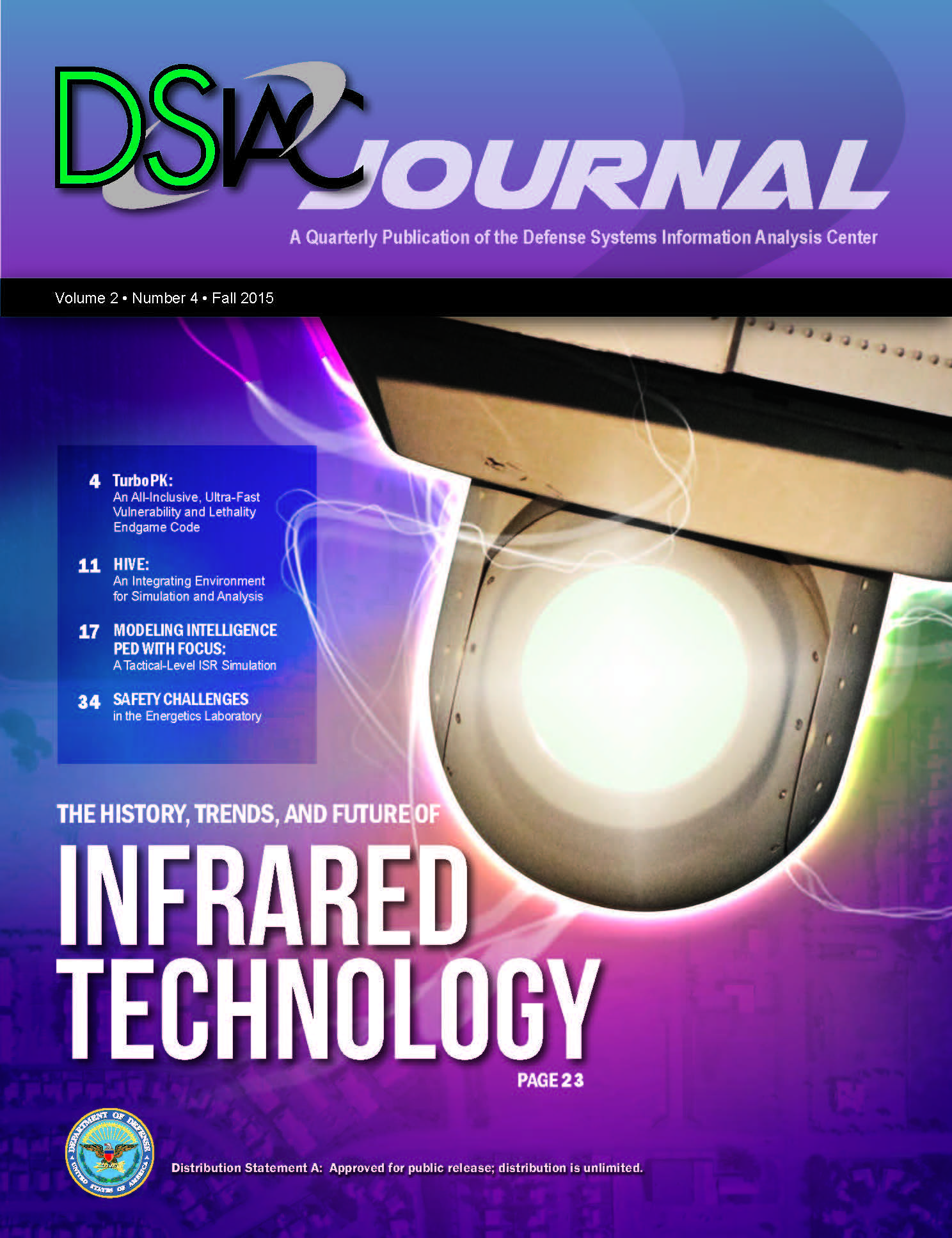an email newsletter released every month highlighting the latest articles, events, technical inquires, and voices from the community
Fall 2015: Volume 2 Number 4

Fall 2015: Volume 2 Number 4
Published: October 1, 2015
After I completed my undergraduate degree in the mid 1980s, my first job was with Martin Marietta Laboratories, where I worked with a team of scientists and researchers developing new infrared (IR) detectors. So, when I first read this quarter’s feature article, I was overcome with nostalgia as the authors took me on an enjoyable stroll down memory lane. But what I found most remarkable was how far IR technology has advanced since then and how it continues to evolve and advance today. IR sensors and systems of the future will not only count and process photons; they will also have the ability to understand what they are looking at and make decisions. In this issue of the DSIAC Journal, we discuss how the U.S. military is working to maintain its technological advantage in this area as it moves from its age-old position of “owning the night” to having to share it with others.
In our feature article, authors Ralph Teague and David Schmieder provide a historical overview explaining the origins, growth, and future of the IR industry in the United States. This historical perspective is an enlightening narrative that explains how the technology evolved from simple crude devices to complex systems capable of seeing what is otherwise invisible. The article concludes with discussions of some of the hottest new technologies and offers a glimpse of what we can expect in the not-so-distant future.
And with all these advances in new sensor technology comes a new problem—how to manage the copious amounts of data that these sensors can generate. Eric Harclerode addresses this problem in his intelligence, surveillance, and reconnaissance (ISR) article, in which he discusses modeling intelligence processing, exploitation, and dissemination (PED) with a tool called the Fusion Oriented C4ISR Utility Simulation (FOCUS). FOCUS provides a new process for efficiently processing and analyzing large amounts of raw ISR data to ensure the data are both timely and actionable when reaching the intelligence community.
Authors Patrick Buckley and Scott Armistead discuss how an internal research and development (IR&D) project to investigate parallel processing, as applied to endgame codes, evolved and led to the development of a tool called TurboPK. As a traditional “point-burst” endgame code, TurboPK can be used to quickly simulate and analyze weapon kinetic energy and blast effects, including armor-piercing projectiles, fragments, exploding munitions, and air blast. This article discusses how weapons analysts can take full advantage of multi-core CPUs to increase M&S speed and reduce product development times.
John Farrier discusses how a decade’s worth of modeling and simulation (M&S) growth and adaptation has been leveraged to give rise to a modern platform for simulation development, integration, and analysis. Built into applications spanning analysis, training, and intelligence, the Hybrid Integration and Visualization Engine (HIVE) is changing the way models and simulations are integrated within the Department of Defense (DoD). HIVE provides a core library with a large number of plugins, allowing the application of existing models and simulations to operate in an integrated environment while providing a reusable suite of simulation tools and visualizations. Thus, HIVE is proving itself to be an agile and capable tool for bringing down costs while promoting true model reuse.
Finally, in our Energetics article this quarter, Andy Taylor discusses the safety challenges of the energetics laboratory. For those engaged in the research and development (R&D) of new and novel energetic materials, there is a myriad of technical and safety challenges in the laboratory that need to be addressed and overcome. Whether it concerns the toxic precursors or the sensitivity of the synthesized energetic, the extremely volatile nature of energetics requires particular attention and vigilance. Taylor explains why energetic materials safety requires a multi-pronged approach that begins with defining the appropriate tasks to be performed and developing the respective project plan.
Looking ahead to our upcoming winter issue, the feature article will be discussing an innovative transportation concept called Hoverbike. The author will be providing a detailed description and several notional operational concepts of this incredible new technology.

